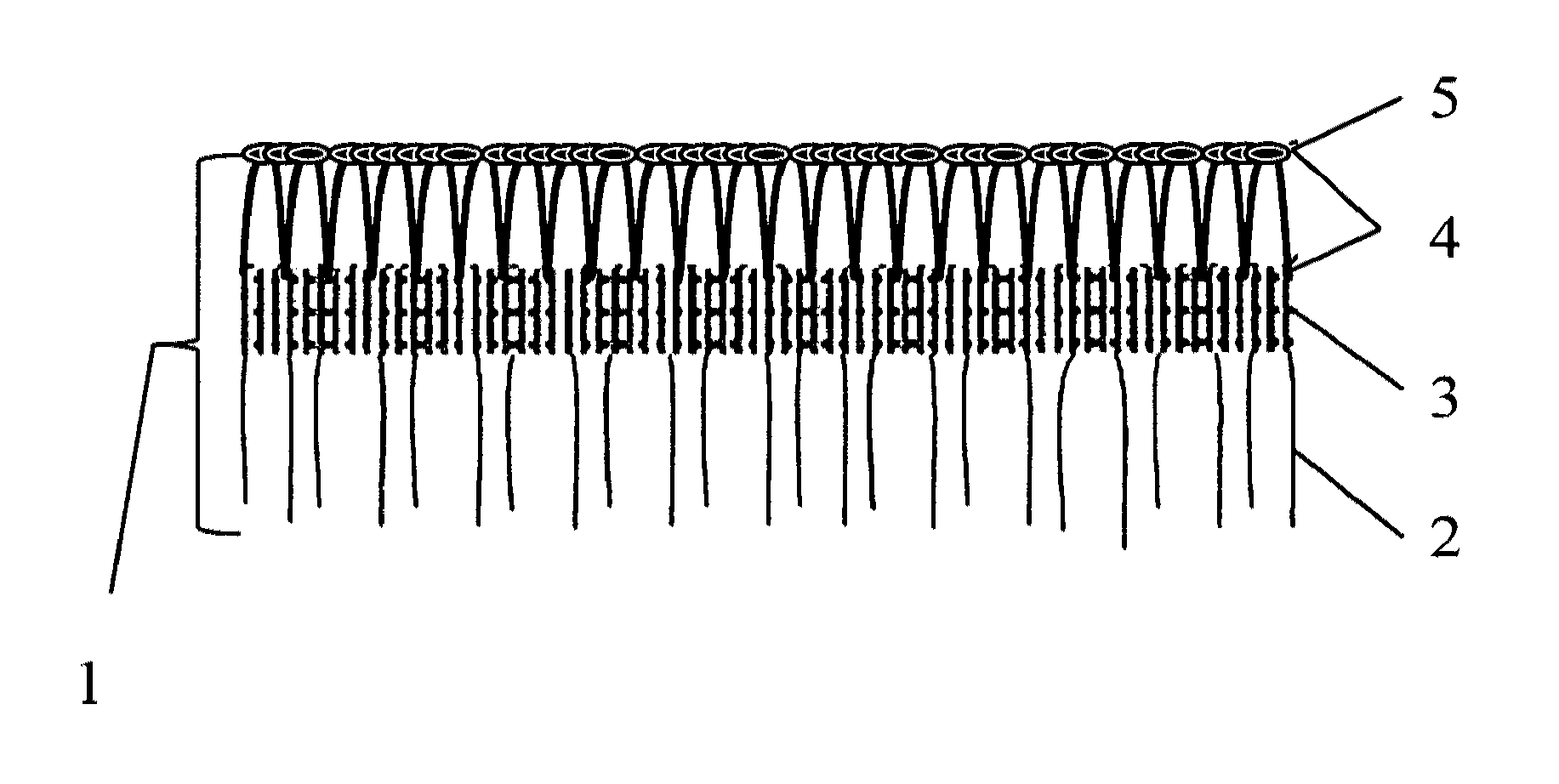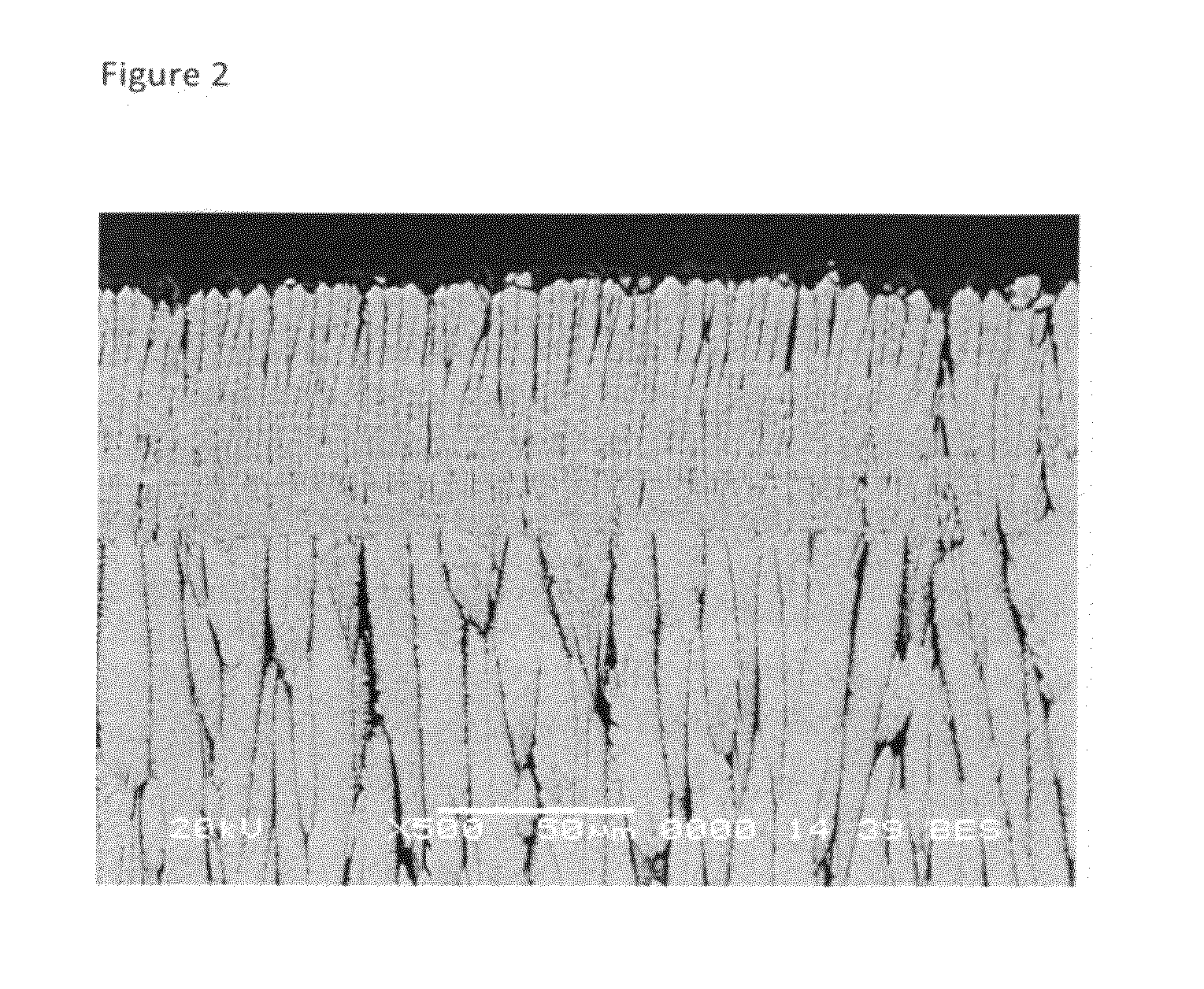Tri-barrier ceramic coating
a ceramic coating and tri-barrier technology, applied in the direction of blade accessories, climate sustainability, machines/engines, etc., can solve the problems of metallic coating oxidizing at a very fast rate, losing its load-carrying function, and insufficient protection of superalloy articles
- Summary
- Abstract
- Description
- Claims
- Application Information
AI Technical Summary
Problems solved by technology
Method used
Image
Examples
example
[0021]The tri-barrier coating was applied to nickel based super alloy surface as follows: a NiCoCrAIYHfSi bond coat was first applied to the alloy; a base thermal barrier layer of Nd0.1Zr0.9O1.95 with Y and Hf dissolved in (see U.S. Pat. No. 7,041,383) was applied to the bond coat surface by EBPVD with a rotation rate of 6 rpm and a gun power of 2.2 to 2.4 Amps (coating tank temperature of 1800° F.) creating a TBC layer 9 mils thick with a mean columnar width of 10 to 25 μm with gaps between the columns of 0.2 to 4 μm; the base thermal barrier layer was cooled to ambient temperature then polished to a surface roughness of Ra 30 mirco-inch; an intermediate CMAS barrier layer of Nd0.1Zr0.9O1.95 with Y2O3 and HfO2 dissolved in was applied to the surface of the base layer by EBPVD with a rotation rate of 2 rpm and a gun power of 1.8 Amps (coating tank temperature of 1600° F.) creating a TBC layer 1 mil thick with inter columnar nano pores on the top and a grid like structure on the bott...
PUM
| Property | Measurement | Unit |
|---|---|---|
| column width | aaaaa | aaaaa |
| column width | aaaaa | aaaaa |
| column width | aaaaa | aaaaa |
Abstract
Description
Claims
Application Information
 Login to View More
Login to View More - R&D
- Intellectual Property
- Life Sciences
- Materials
- Tech Scout
- Unparalleled Data Quality
- Higher Quality Content
- 60% Fewer Hallucinations
Browse by: Latest US Patents, China's latest patents, Technical Efficacy Thesaurus, Application Domain, Technology Topic, Popular Technical Reports.
© 2025 PatSnap. All rights reserved.Legal|Privacy policy|Modern Slavery Act Transparency Statement|Sitemap|About US| Contact US: help@patsnap.com



